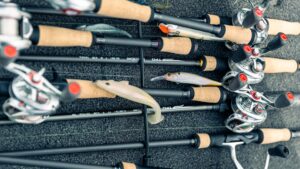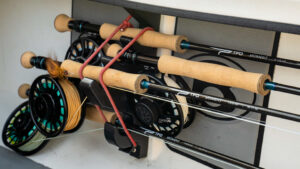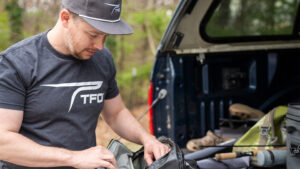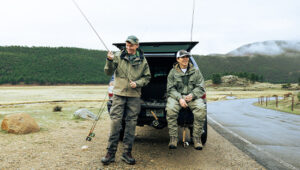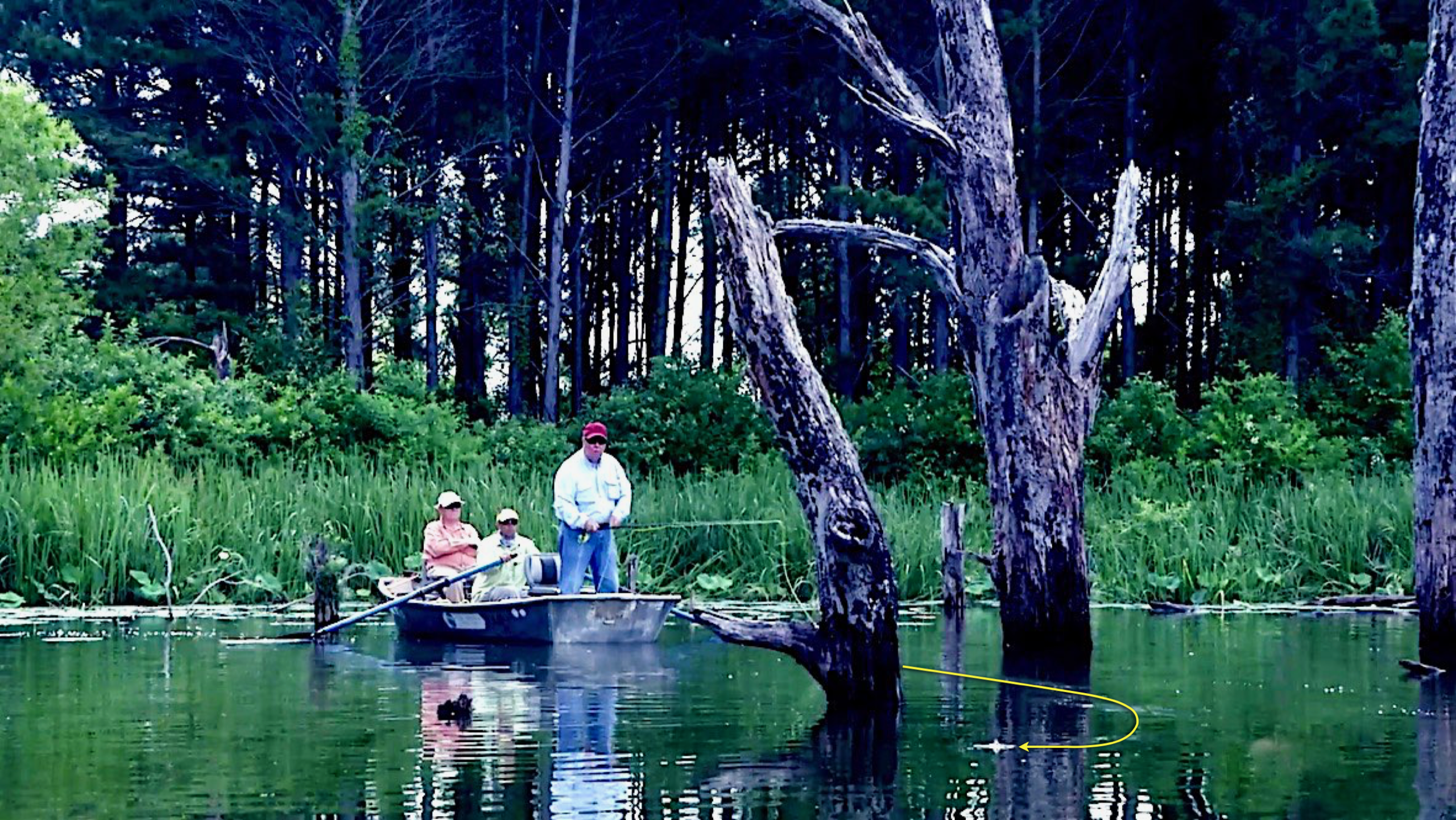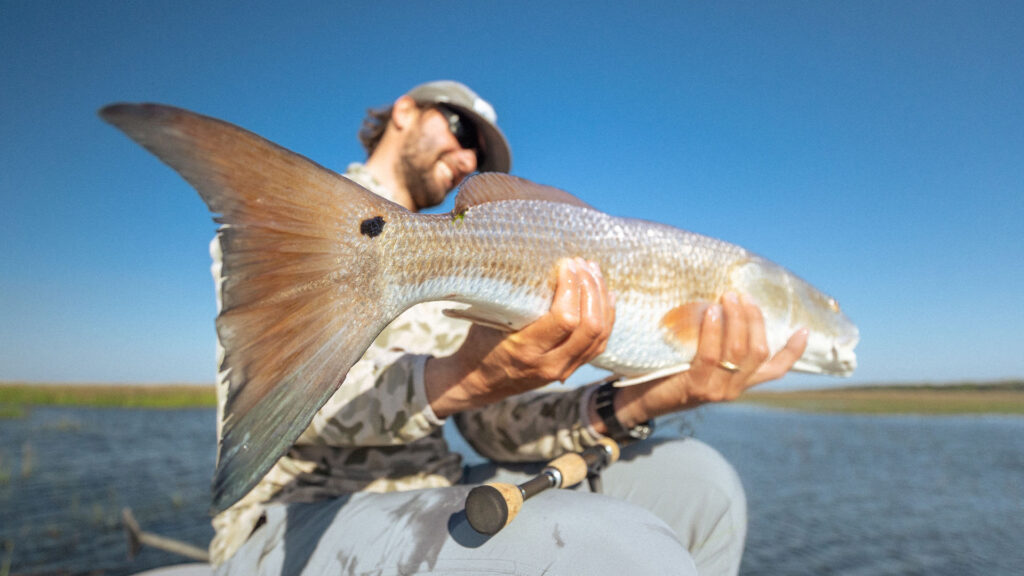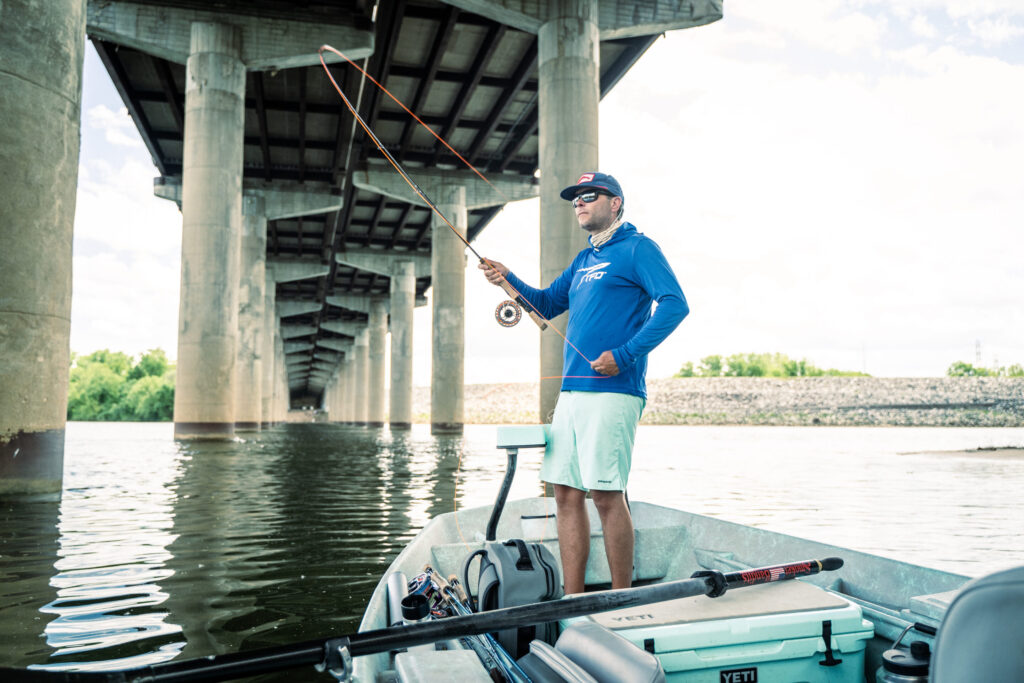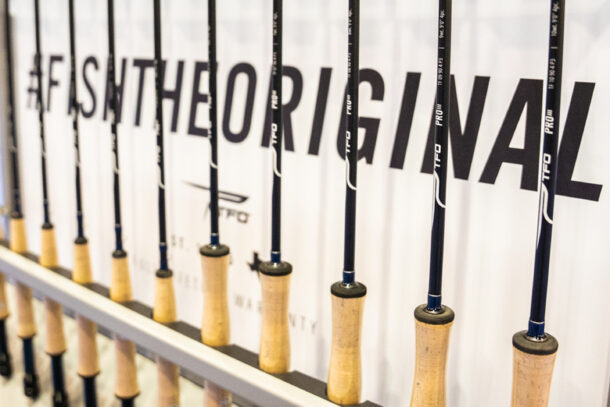Once you can manage a reasonable forward cast, often called a “pick up and lay down”, you should focus on expanding your repertoire of casts. Due to limited space, I can only describe the basic mechanics of three, but these will hopefully get you started.
ROLL CAST
The roll cast is perhaps the most misunderstood. Fishermen regularly complain that, “My roll cast is terrible; the line splashes down or piles up.” Invariably, traditional instruction is at the root of this problem. We have all heard instructions like “start with the rod at 11:00”, “let the line drape behind you”, “chop down as if using a cleaver or hatchet”, and so on. Such instructions might suffice for casting small flies short distances with a floating line, but to get greater distance, turn over large or heavy flies, or fish sinking lines, they compel us to use excessive force or effort. The reasons are obvious.
First, starting with the line hanging limp behind you represents slack, and you have to get rid of that slack before you can load the rod. Lightly toss the “D-loop” behind you, but start forward before it collapses to the surface. You only need a short piece of line (the “anchor”) actually on the surface when you begin the stroke, so have the end of the line no farther in front of you than approximately a rod length or so when you start forward. Finally, since the line must continue traveling in the direction the tip Is moving (not where it is pointing) when the rod straightens, stroke forward, not downward. You want the line to unroll in the air above the water rather than roll across the surface, except in one special case. This may call for starting with the rod tip well to the rear, even pointing straight back for very long casts. This allows you to make a longer stroke, and will load the rod more deeply into the butt with no extra effort.

Lefty Kreh demonstrates why chopping down on the roll cast is poor advice. Most of the energy goes downward, instead of forward; the loop is very large, wastes a lot of energy, and will pile up at the end unless you use excessive force. Photo: Ed Jaworowski

Note this exceptionally efficient and tight loop as it unrolls toward the target. The keys are: starting with the rod pointed well to the rear; stroking the rod forward, not downward; very fast but smooth final acceleration to an instant stop. Photo: Ed Jaworowski
CURVE CASTS
Aside from a straight forward cast and a roll cast, curve casts have more applications in many fishing situations than any other. Understand that what the hand does at the end of the stroke, the rod tip will duplicate; the line and fly will in turn replicate that. So, if you want the line to curve, you must make the tip curve as the rod straightens. These photos and explanations demonstrate just two of several ways to make this happen, whether casting sidearm or overhead. In either case, avoid stroking downward toward the water.

Here, I cast sidearm, applying a little more effort than the cast would normally call for. The excess energy causes the line to curve to my left, around the tree stump. Casting left-handed, which is quite simple, will allow the line to curve from the opposite side. Photo: The Complete Cast (TFO)
Making the line curve with an overhead cast, when conditions call for that, is a bit trickier, but if you sharply turn your knuckles to the right or left the instant before stopping, the rod tip and, ultimately, the line and fly will do the same.

In this example, I sharply turned my hand to the right at the very end of the stroke. The line unrolled straight ahead between the trees, then the leader and popper sharply snapped to the right, behind the tree. Photo: The Complete Cast (TFO)
REACH CAST
While a curve cast calls for modification during the actual execution of the casting stroke, the reach cast introduces an additional motion after your hand stops and the rod straightens. There are a number of applications for this cast. One example, say you want to cast a dry fly directly upstream beyond a trout, but must avoid having the line fall over the fish and spook it. If conditions won’t allow you to move to a better position, a reach cast can solve your problem.

Stop the rod tip going directly toward the target but, while the line is unrolling in the air, continually and steadily swing the rod off to the right or left. It is crucial however, that you keep feeding line with your line hand while making the reach maneuver. Photo: The Complete Cast (TFO)

When executed properly, the fly will go directly to the target, but the line will fall to the water well to the side. The rod will be pointing at 90 degrees to the direction of the cast, as if you had cast from a position 9 or 10 feet to the right or left. Photo: The Complete Cast (TFO)
TACKLE
While skill is more important than tackle when casting, better designed tools will help greatly. Of course, personal choices come into play; here are mine. For heavier warm- and saltwater fishing, calling say for 8 to 12-weights, my decided favorite is the Axiom 2-X. Due to its higher modulus and Kevlar double-helix, it tracks, unloads, and stabilizes more efficiently, with less vibration, than any rod I have ever cast. Period. This makes for easier longer casts, as well as those described above, especially with larger and heavier flies, and with minimal false casting. For lighter (i.e., 3 to 7-weight) fishing, I rely on the quick, light, and durable LK Legacy. It’s ideally suited for all anglers when situations call for accurate and delicate presentations.
For much more detailed explanations of these and many other casts, I suggest you consult The Complete Cast, the four-hour instructional DVD/Blu-Ray from TFO, on which Lefty Kreh and I collaborated, and my newly-released Perfecting the Cast (Stackpole Books), which summarizes what I learned from my 45 years of coaching.
![]()
